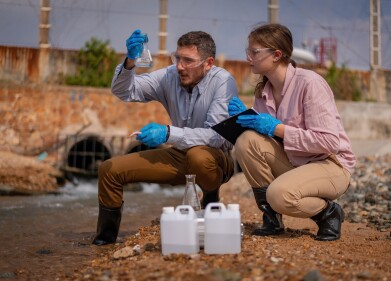Water/wastewater
Why is it Important to Measure TOC?
Feb 22 2019
Water purity is essential in a number of industries around the world, particularly the pharmaceutical industry, power generation and semiconductor manufacturing. Bacteria and organic compounds in water can damage industrial systems, impact product quality and even lead to environmental harm.
One of the ways to combat these potential issues is to measure the total organic carbon (TOC) of water. TOC, put simply, is the total level of organic molecules or compounds in purified water. This analytic technique allows companies and organisations to understand if the water they are using for various processes is pure enough/
What is measured?
TOC is a non-specific measurement and will not define the individual molecules found in the water. However, it measures a range of different things, including:
- Total carbon levels
- Inorganic carbon
- Total organic carbon
- Dissolvable organic carbon
- Non-dissolvable organic carbon
It's important to measure these different values as each type of carbon can cause varying issues and levels of harm. So, by measuring each variable, organisations can be sure their water supply is of the correct levels.
How is TOC measured?
When it comes to TOC analysis, there are three steps that must be completed: sampling, oxidation and detection. Regulations require analysis to have automatic sampling and automatic dilution capability to improve the reliability and accuracy or the measurement.
TOC analysts use two different types of detection methods: non-dispersive infrared (NDIR) and conductivity detectors. NDIRs, which use a light source, cell and detection, are much more common than conductivity detectors as the latter has stability and interference issues.
The importance of measuring TOC
Measuring and maintaining TOC standards within manufacturing and water supply industries is vital to ensure no harmful toxins are released into the environment. In the pharmaceutical industry, for instance, high purity water is one of the main ingredients used throughout a number of production processes and so, ensuring the water is of a certain purity is essential to prevent bacterial contamination or poor product quality.
As well as preventing contamination and the spreading of harmful bacteria, TOC analysis is useful for testing the cleaning methods used by companies. So, organisations can ensure that their systems for cleaning the water supply are running correctly, reducing the risk of low-quality water being used within the manufacturing process.
Water pollution and contamination can be harmful for both humans and our environment. For more information about how wastewater and contaminated water can impact our health and the health of the environment, take a look at our e-learning video – ‘The utility of municipal wastewater analysis for drug epidemiology, food safety and environmental monitoring: From targeted analysis of biomarkers to non-target screening’.
Digital Edition
IET 35.2 March
April 2025
Air Monitoring - Probe Sampling in Hazardous Areas Under Extreme Conditions - New, Game-Changing Sensor for Methane Emissions - Blue Sky Thinking: a 50-year Retrospective on Technological Prog...
View all digital editions
Events
Apr 08 2025 Birmingham, UK
Apr 08 2025 Targi Kielce, Poland
Apr 08 2025 Baku, Azerbaijan
Apr 08 2025 Bahrain
Apr 10 2025 Beijing, China



















